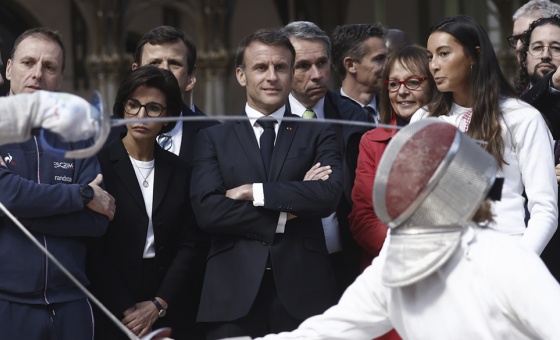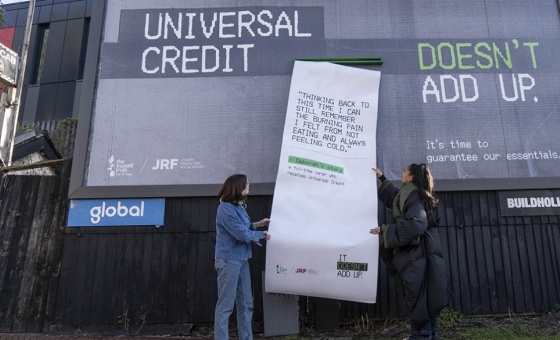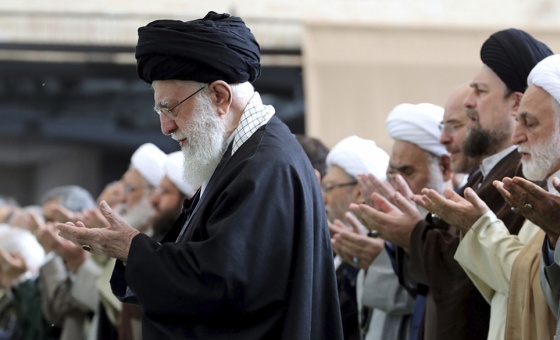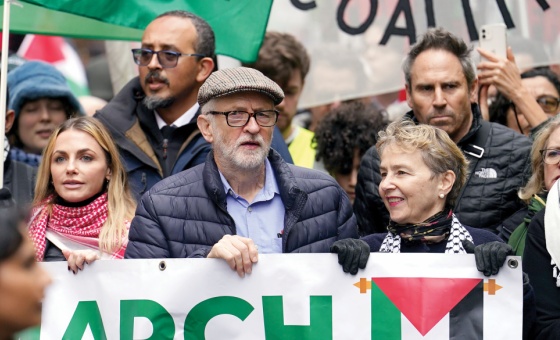This is the last article you can read this month
You can read more article this month
You can read more articles this month
Sorry your limit is up for this month
Reset on:
Please help support the Morning Star by subscribing here
AFTER any war there are always a number of those who have lost loved ones and are in deep mourning. That is the time that charlatan spiritualists, profit-driven supernaturalists and all sorts of dodgy preachers come out of the woodwork to take advantage of these people’s grief.
Of course there were genuine believers and perhaps the best known of them in the years after the immense slaughter of WWI was Sir Arthur Conan Doyle, the creator of Sherlock Holmes.
Doyle was a huge supporter of spiritualism; his wife was a practicing medium. Lady Doyle often conducted seances appearing to be in communication with the dead, and Doyle was absolutely convinced of her ability.
Doyle had been for many years a leading member of the Society for Psychical Research, an organisation composed mainly of enthusiastic believers in the paranormal rather than being genuinely interested in objective research.
Yet in the 1920s even that unthinking support was not enough for Doyle. He led a resignation of 84 members of the society, on the grounds that it was too sceptical. Most of those who left the society joined the Ghost Club, of which Doyle was a long-time member. The Ghost Club was fully convinced that the supernatural was an absolute fact.
At about the same time Harry Houdini was best known as the world’s most famous magician and escapologist. He was a huge star. Houdini was a great friend of Doyle but he was also a committed debunker of false mediums and dishonest spiritualism.
This difference of opinion would challenge a friendship between two deep thinkers in the field of the public understanding of science.
Despite this radical difference of opinion, Houdini and Doyle managed to keep their friendship alive for some years.
Then in the spring of 1922, Houdini invited Doyle to the home of his friend New York Lawyer Bernard Ernst.
Houdini wanted to prove to Doyle that anything a medium could do he could reproduce using the tricks of stage magic.
Houdini had Doyle go outside in private and write a simple note that Houdini could not have seen. When Doyle re-entered Houdini had a cork ball soaked in white ink magically roll around on a slate and spell out the exact message Sir Arthur had written.
Houdini wrote to Doyle telling “I have devoted a lot of time and thought to this illusion; I have been working at it, on and off, all winter. I won’t tell you how it was done, but I can assure you it was pure trickery.
“I did it by perfectly normal means. I devised it to show you what can be done along these lines. Now, I beg of you, Sir Arthur, do not jump to the conclusion that certain things you see are necessarily supernatural, or the work of spirits, just because you cannot explain them.
“Do, therefore, be careful in future, in endorsing phenomena just because you cannot explain them. I have given you this test to impress upon you the necessity of caution, and I sincerely hope that you will profit by it.”
Doyle responded by inviting Houdini to his own home on June 17 1922 so that his wife could convince Houdini of the reality of the supernatural by putting Houdini in touch with his deceased mother.
In the ensuing seance, Lady Doyle, produced a letter she claimed had been written by Houdini’s dead mother.
Doyle believed this proved the existence of communication beyond the grave. He believed he had won the argument.
Houdini pointed out that the letter was written entirely in English and his mother could not read, write or speak the English language.
The chasm between the two men became even bigger. In 1923, Houdini agreed to join a committee formed by Scientific American magazine to offer 5,000 dollars to any medium that could pass the committee’s tests. None was able to do so, and the prize was never collected.
Houdini took to attending seances in disguise, accompanied by a reporter and police officers. These activities really upset Doyle who refused to believe any of Houdini’s exposés.
Amazingly Doyle actually believed that Houdini was himself a powerful spiritualist medium, and had performed many of his demonstrations only by means of his own paranormal abilities.
The friendship broke down completely with public threats of lawsuits. Houdini continued challenging and exposing fake mediums for the rest of his life. His fame grew for his amazing escapes and stage acts, but he was increasingly attacked by spiritualists.
Houdini died in 1926. Sir Arthur published The Edge of the Unknown about his life experiences with spiritualism, and he dedicated an entire chapter to his remarkable thesis that Houdini actually had supernatural powers, but knowingly lied about them.
Houdini’s battle against spiritualism continued beyond his own death.
His wife, Bess Houdini, held annual seances, as the couple had planned, to reach Harry in the hereafter. None of the attempts were successful.
The couple had agreed upon a code word to be included in any message Houdini managed to get through from the grave. The word, “Rosabelle-believe,” never emerged in any of the seances.
The tradition of holding a seance for Houdini continues, held by magicians throughout the world. No messages have ever come through.
Doyle never lost his faith in life after death but so far he too has never been able to confirm that belief from beyond the grave.
Sadly even today there are still many charlatan mediums taking money from grieving people desperate to reach lost relatives.
- Houdini and Doyle is shown at 9pm on Thursdays on ITV Encore.









